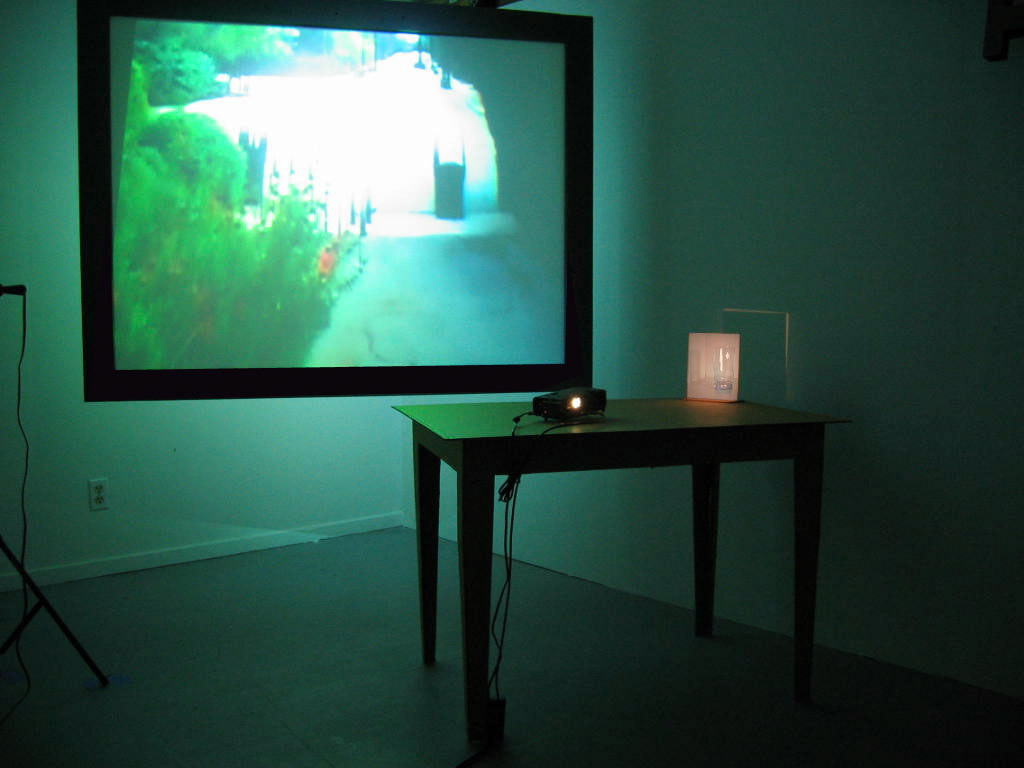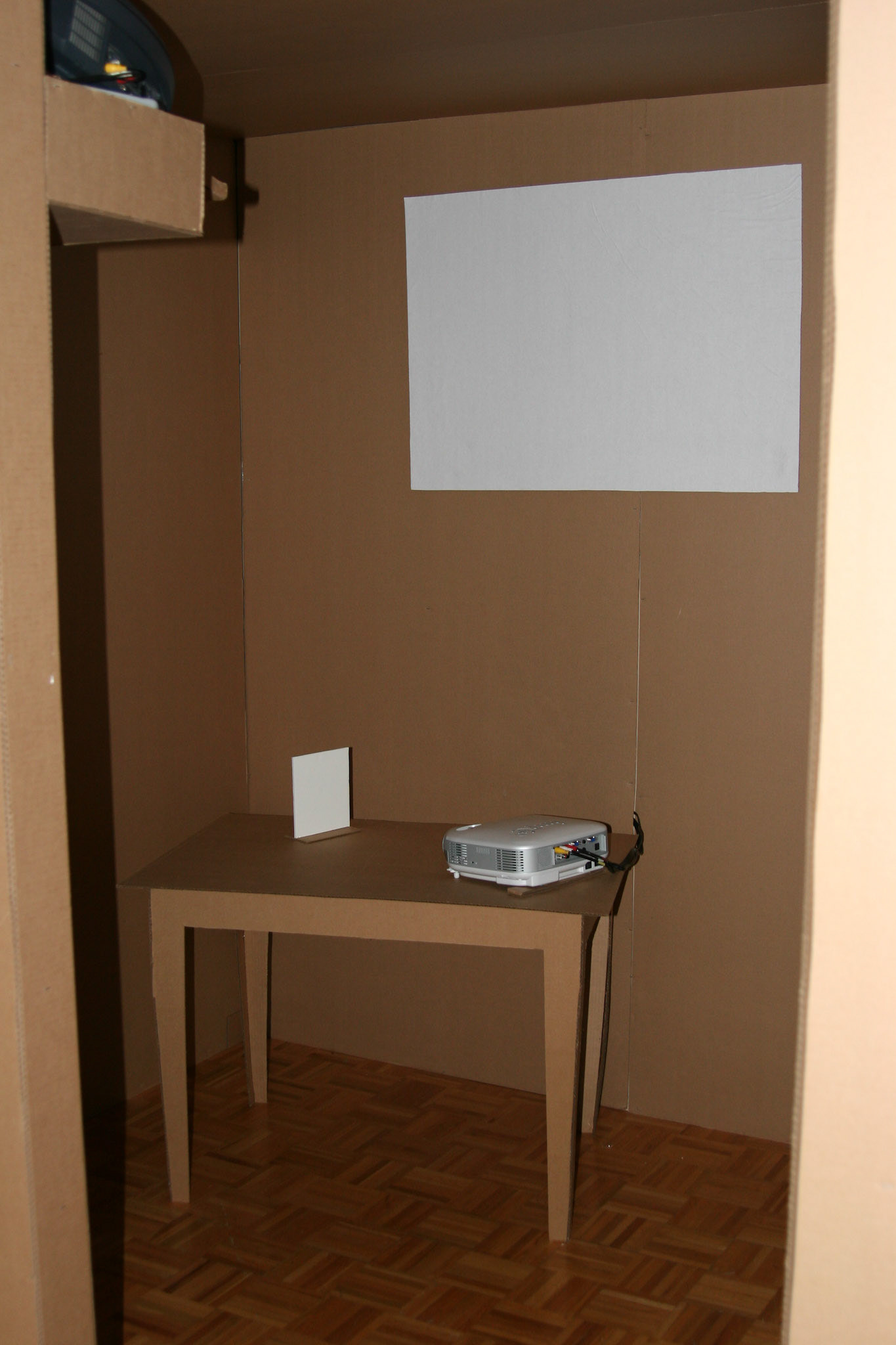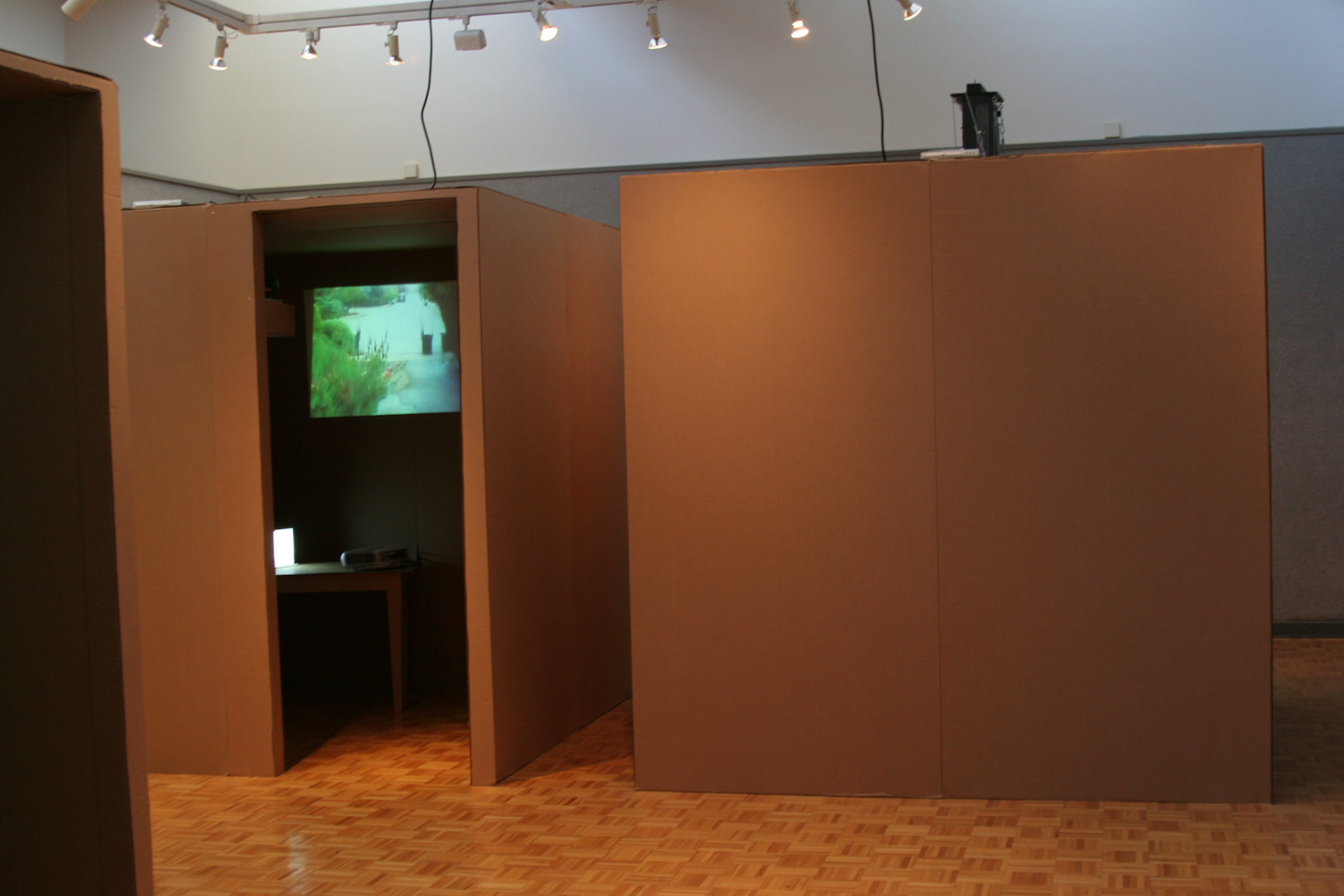pick-up, 2005
This video captures the weekly disposal of garbage throughout the span of a year. Departing from the conventional gallery wall setting, the layout aims to immerse the viewer in a representation of a domestic interior space using a symbolic cardboard table. Viewers' attention engaged in the repetitive nature of this routine, emphasizing the continuity of garbage removal. The flow of weekly pickups is skillfully edited to convey a seamless stream of moving garbage trucks, intermittently interrupted only by passing cars in the driveway.
Situated on a second screen atop the cardboard table is an image of a glass filled with water. This parallel video chronicles the gradual evaporation of water over a two-week duration, culminating in the dramatic shattering of the glass. The contemplative atmosphere is intensified by the deliberate silence, periodically punctuated by the distinct sound of glass shattering every ten minutes.
This multimedia installation invites viewers to reflect on the cyclical nature of waste removal, juxtaposed with the ephemeral beauty and fragility encapsulated in the evaporation and shattering of water. The integration of sound, visuals, and spatial design transforms the mundane act of garbage disposal into a contemplative exploration of time, transience, and the delicate balance between order and chaos within the domestic realm.

pick-up Installation in studio. Georg Burwck 2005

pick-up Installation in studio. Georg Burwck 2005

pick-up Installation in studio. Georg Burwck 2005

pick-up video still, Installation at Brandstater Gallery. Georg Burwck 2005

pick-up, Installation at Brandstater Gallery. Georg Burwck 2005

pick-up, Installation at Brandstater Gallery. Georg Burwck 2005

pick-up, Installation at Brandstater Gallery. Georg Burwck 2005

pick-up, Installation at Brandstater Gallery. Georg Burwck 2005
This installation was featured in CHEAP NEW WORLDS at the Brandstater Gallery comprises three rooms, each reimagining domestic interiors and delving into the intricate relationships we form with the "objects" that populate our world. These relationships, in turn, shape the landscapes within which these objects are placed. The term "object" extends beyond mere tangible entities, encompassing various forms, including people or things towards which actions or feelings are directed.
In each of the three rooms, a distinct life experience is framed, aiming to recreate, for the physical senses, phenomenological impressions. Leveraging virtual space and capitalizing on the viewer's pursuit of what I refer to as the "super-real," these installations explore our collective fascination with mimicking reality. This preoccupation has spurred a quest for a version of the "real" that surpasses the authenticity of reality itself.
The cultural obsession with representation manifests as a yearning for a virtual reality driven by our desire for this elusive "super-reality," allowing us to transcend the constraints of what is actually real. The pursuit of this heightened reality unfolds both within the recesses of the mind and in physical space, signifying an escape into realms that exist beyond the boundaries of our immediate reality.